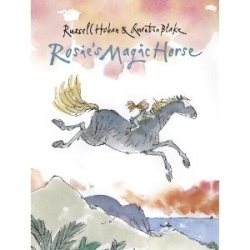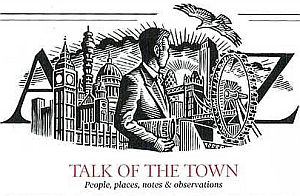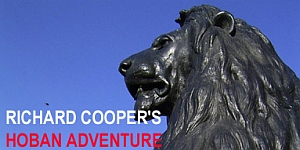On Sunday morning I was running in a hill race on the Long Mynd, a hill above Church Stretton. It was a dry and sunny day, although the ground was still frozen underfoot where it was shaded by the hills. The views were superb. The race over, we wanted to look around Ludlow, an historic old town with plenty of timbered buildings, cobbled passageways etc. We found a market there, a typical Sunday market with stalls of collectibles, bric-a-brac, old books, jewellery etc.
I was looking out for some Hoban symbolism, and saw for example a turtle brooch. Then rummaging at a bookstall I noticed a book by a Norma Ridley, called something like "Northumbrian Approach". The similarity between Ridley and Riddley, Russ's Mr Walker, was too good to miss. The book was in a box containing an assortment of hardbacks including some art history, e.g. on van Gogh, and appeared to be popular with the browsing public. I slipped my yellow paper between Ms Ridley's book and the next.
The yellow paper contained the following text:
He went to the window, looked at the frost-sparkling cars, thought of the seasons revolving inexorably while metal rusted and flesh decayed, thought of trees across the common, now bare, how in the summer dawns they swayed their leafy tops in the early breeze, indifferent to humans who slept and woke and slept again.
from Angelica's Grotto
The world is full of ghosts: not the kind who groan and clank their chains, not even people ghosts, but the ghosts of the touches of hands on what has been used, worn, handled. Might it be a kind of metaphysical DNA, so that from the touch of a woman's hand on a necklace, a man's hand on a knife, the whole person might be called into being? Indeed, has the whole person ever ceased to be, entirely?
from The Bat Tattoo
I like the first quotation because it makes a beautiful contrast between nature's cycles and the more superficial cycles of man. Hoban's words show how nature's cycles have such permanence and reliability in comparison to our own. They highlight how unreliable our actions, and how impermanent we are.
In the second quotation I like the idea that anything touched by us somehow retains a memory of us. Things like hand rails and old stone steps are obvious examples, but Hoban uses much lighter touches, contrasting male and female aspects. This sensitivity and closeness of observation is one of the reasons I like Russ's work so much.
On another stall at the market in Ludlow I happened on a copy of A Shropshire Lad, a 1948 reprint of an 1896 edition, and I bought it.
Best wishes,
Steve






 On 4 February 2012 the Slickman A4 Quotation Event celebrated
On 4 February 2012 the Slickman A4 Quotation Event celebrated 


 In 2005 the first international convention for Russell Hoban fans took place in London, and was marked by the publication of a fantastic 48-page booklet featuring exclusive contributions from innumerable fans and associates including novelist David Mitchell and actress Glenda Jackson. A wonderful memento of the event, it's also a beautiful collector's item and must-have for any Hoban fan. Although in limited supply, copies of the booklet are still available at £6.00 each plus p&p. Order direct from
In 2005 the first international convention for Russell Hoban fans took place in London, and was marked by the publication of a fantastic 48-page booklet featuring exclusive contributions from innumerable fans and associates including novelist David Mitchell and actress Glenda Jackson. A wonderful memento of the event, it's also a beautiful collector's item and must-have for any Hoban fan. Although in limited supply, copies of the booklet are still available at £6.00 each plus p&p. Order direct from  Russell Hoban turned 86 on 4 February 2011 and fans celebrated in traditional style by leaving quotes from his books in public places. Browse their quotes
Russell Hoban turned 86 on 4 February 2011 and fans celebrated in traditional style by leaving quotes from his books in public places. Browse their quotes  To celebrate 30 years in print of Russell Hoban's most famous novel
To celebrate 30 years in print of Russell Hoban's most famous novel 






No comments:
Post a Comment
Note: only a member of this blog may post a comment.